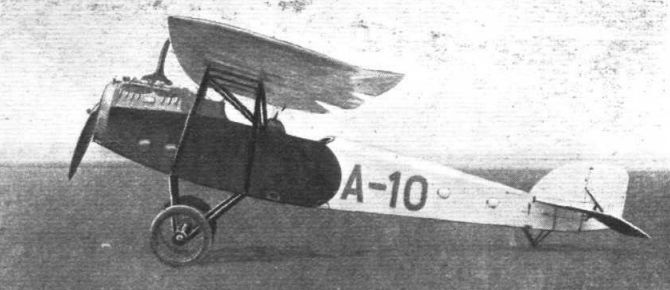
Описание
Страна : Австрия
Год : 1924
Flight, April 1925
SOME "AVIS" SCHOOL MONOPLANES
Austrian Firm Starts Original Construction
GRADUALLY the countries which commenced by obtaining machines from abroad, or built them at home under licence, are taking up original design, and in many instances some very interesting machines have resulted. In Austria certain firms were, of course, in existence before the War, but these appear to have disappeared, or at any rate to have closed down their aircraft sections. In their place a new Austrian aircraft firm has come into being since the War, and in spite of very great difficulties, mainly financial, has already produced some four or five different types of aeroplanes. The name of this firm is the "Avis" Aircraft and Automobile Works, Ltd., or, to give it its Austrian name, the "Avis" Flugzeug und Autowerke G.M.B.H. This firm has offices in Vienna and works at Brunn am Geb., while the aerodrome is at Aspern, a name that will be familiar from the early days of flying.
The first types to be produced by the "Avis" firm were school monoplanes, and it is these which form the subject of the accompanying illustrations. More recently a more ambitious machine has been produced, i.e., a three-engined passenger carrier known as the "Avis" B.G.V.I. A description of this machine is, however, reserved for another occasion.
Differing but little in detail construction, the following description will, in the main, apply to all three types, and where any considerable differences occur they will be indicated in the text. Generally speaking, the "Avis" construction may be characterised as being of the well-known Fokker type, i.e., wood wings covered with ply-wood and welded steel tube fuselage. Aerodynamically also there is some resemblance to the Fokkers in that the school machines are all parasol monoplanes, but the wing supports differ somewhat from those employed by the famous Dutch designer.
Two almost identical types are the B.S. I and the B.S. II, both of which are fitted with six-cylinder water-cooled engines. In the former, however, the two cockpits merge into one, presumably in order to facilitate instruction work, whereas in the B.S. II there are two separate cockpits arranged in the more usual manner. Slight differences, are also noticeable in the exhaust arrangement, and to somewhat smaller extent in the engine cowling.
The fuselage is, as already mentioned, of the welded steel tube type, with fabric covering. The engine, which can be any 100 h.p. water-cooled six-cylinder-in-line, is mounted on a steel tube structure, and is separated from the cockpits by the usual fireproof bulkhead. No petrol is carried in the fuselage, the main petrol tank, mounted in the wing and over the centre of gravity, being also the service tank, so that no petrol pressure is necessary. The oil tank, however, is mounted beside the engine. A nose radiator, so mounted as to be readily removable, is secured to the forward ends of the four longerons.
As the machines are mainly intended for school work, dual control is provided. The duplication includes all controls, even those of the engine, but provision is made whereby the instructor can make the pupil's throttle-control inoperative.
The wing construction consists of two box spars with spruce flanges and ply-wood sides. The ribs are located on the spars without the use of screws or nails through the ribs, and the whole is then covered with ply-wood. The plan form of the wing is similar to that of the Fokkers, and small ailerons with turned-up tips are fitted to false spars. The wing is supported from the fuselage by streamline steel tubes, one pair running to upper and one to lower longerons on each side. The triangulation thus obtained is further assisted by a central cabane, whose legs converge on the centre line of the wing. It should be mentioned that the wing struts are provided with left- and right-hand bolts for adjusting the angle of incidence. The trailing edge is cut out in the centre to give a better view, but one is somewhat doubtful as to the effect of this large cut-out on the aerodynamic characteristics of a thick high-lift wing.
The tail plane, elevators, rudder and fin are of steel tube construction, fabric covered, and the tail plane is adjustable, although not in flight. The tail appears on the small side, compared with British practice.
The undercarriage, with streamline steel tube struts, is of normal type, with rubber shock absorbers.
Another school machine of very similar type is the B.S. IV, which differs from those just described mainly in being fitted with a Siemens-Halske radial air-cooled engine.
- Flight, April 1925
SOME "AVIS" SCHOOL MONOPLANES
Фотографии
-
Flight 1925-04 / Flight
Регистрационный номер: A-16 The Avis B.S.II is similar to B.S.I, but the two cockpits are not separated, and the engine cowling is slightly different.
-
Flight 1925-04 / Flight
TWO AVIS SCHOOL MACHINES: The B.S.II is fitted with a 100 h.p. water-cooled engine, and the B.S.IV with an 80 h.p. Siemens radial air-cooled engine. General arrangement drawings.
- Фотографии


